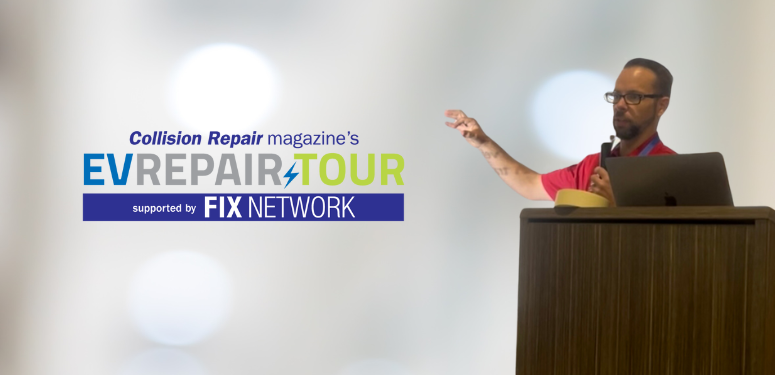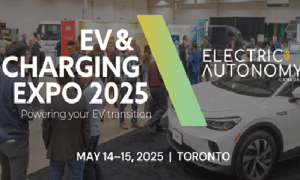Calgary, Alberta – For Ben Hart, auto body technician instructor at the Southern Alberta Institute of Technology (SAIT), the fear mongering surrounding the adoption of electric vehicles can be easily mitigated through one simple strategy—research.
During his presentation at Collision Repair magazine’s EV Repair Tour, supported by Fix Network, Hart discussed how the automotive industry needs to redshift its focus on EVs away from what makes them different from ICE vehicles to what commonalities the two systems share.
Hart further outlined how the collision repair industry mainly deals with repairing the bodies and structures of vehicles, and this is something that both electric and ICE vehicles share.
While reiterating the importance of understanding the safety and risks that can come along high-voltage systems, it is also important to remember the inherent dangers of internal combustion engines—something that the automotive industry has been dealing with for over a hundred years.
Just like an EV vehicle with damage to its battery, Hart noted how “if an ICE vehicle came in with a fuel leak, a collision repair centre would work to isolate it from other vehicles and be aware of potential fire risks.”
Hart further noted how the industry often gets so caught up in the “stress” of high-voltage systems that it forgets that every vehicle has a 12-volt battery.
Hart also stressed the importance of research when it comes to preparing for not only EV adoption, but the shifting trends in all vehicle manufacturing.
For Hart, not staying up-to-date on OEM information “isn’t an option,” and checking in with OEM data “isn’t something that (collision repair centres) do once in a while.”
Even if a repair shop is working on a vehicle they have seen a hundred times, Hart reminded the Calgary audience that it is still important to look up OEM information every time because it is impossible to anticipate when information is going to be updated.
In this regard, it is also important to remember to stay up-to-date on OEM required tools and equipment–especially for EV vehicles where outdated methods can damage the battery.
Hart ended his presentation with the assurance that, when doing repairs, “you don’t want to just let things happen.”
Without an emphasis on research, funding and following the proper procedures, Hart discussed how a collision repair shop shouldn’t even begin to think about tackling EVs. If not certified, an auto shop shouldn’t focus on EVs until the necessary tools and training have been put in place.
Similarly, Hart stressed how a collision repair shop “needs to be doing ICE vehicles correctly because if not, they can’t hope to even have a conversation about electric vehicles.”
For Hart, ultimately, the future of automotive repair is one that shouldn’t be done through guesswork. While the future is impossible to predict, in emphasizing available knowledge and doing procedures correctly from the get-go, the collision repair industry can ensure that it is adopting a macro view, rather than getting caught up in the details.
The post Adopting a Different (Power)train of Thought: Ben Hart talks readjusting focus when it comes to EVS appeared first on Collision Repair Magazine.






























